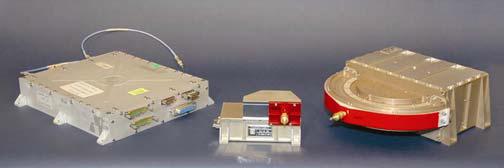SARA on Chandrayaan-1

The Sub-keV Atom Reflecting Analyzer (SARA) experiment onboard Chandrayaan-1 mission was a joint Indo-Swedish collaborative research program between SPL-VSSC and Swedish Institute of Space Physics (IRF), Kiruna, Sweden with participation from Japan (JAXA), and Switzerland (University of Bern). The main scientific objective of the SARA experiment was to study lunar-solar wind interaction by means of the Energetic Neutral Atoms (ENAs) and the charged particles produced as a result of solar wind interaction with the lunar surface. The three components of the SARA experiment were: two sensors - CENA (Chandrayaan-1 Energetic Neutral Analyzer), which detected low energy neutral atoms in the 10-3300 eV energy range, and the SWIM (Solar WInd Monitor), which measured the plasma flux in the near-lunar environment in the 10-3000 eV energy range, and the DPU (Digital Processing Unit) which commanded and controlled the operations on both the sensors. Both sensors had a fan shaped Field of View (FoV). Onboard commissioning of SARA was successfully completed in January 2009, and the planned normal operations began in February 2009. SARA performed well till the end of the mission. SARA experiment has yielded many novel and path breaking scientific results - some of which are listed below.
- Observation of large (up to 20%) and sustained backscattering of solar wind protons as ENAs due to the interaction of solar wind with lunar surface.
- The scattering function for the backscattered ENAs derived from the observations found to be different from the conventional expectations.
- Discovery of Mini-magnetosphere on Moon.
- Observation of reflected solar wind protons from dayside lunar surface and their dependence on the solar wind velocity.
- Higher deflection of solar wind protons from magnetic anomalies (up to 50%).
- Entry of solar wind protons to deeper lunar wake by diffusion along Interplanetary Magnetic Field.
- First observation of solar wind protons in the lunar wake during condition of magnetic aligned flow.
- Large positive surface potential at magnetic anomaly region derived from the observed ENA backscattering. Surface potential <+135 V is found inside the Gerasimovich magnetic anomaly region.
- Observation of pick-up ions in lunar vicinity.
- Global map of ENAs from Moon.
- First observation of solar wind sputtering of the lunar surface. Neutral oxygen atoms were observed whose source process was identified as the sputtering of the lunar surface by the solar wind.
- Estimation of shielding strength of several magnetic anomalies as a function of solar wind dynamic pressure and the filed strength of the anomaly.
- Observation of backscattered hydrogen ENAs in the Earth's magnetotail and their characteristics.
- Almost no dependence of ENA backscattering on surface properties using South Pole Aitken Terrain as a sample region.
- Characteristics of proton velocity distributions in lunar wake and their source processes.
- Discovery of a new population of suprathermal protons in lunar wake